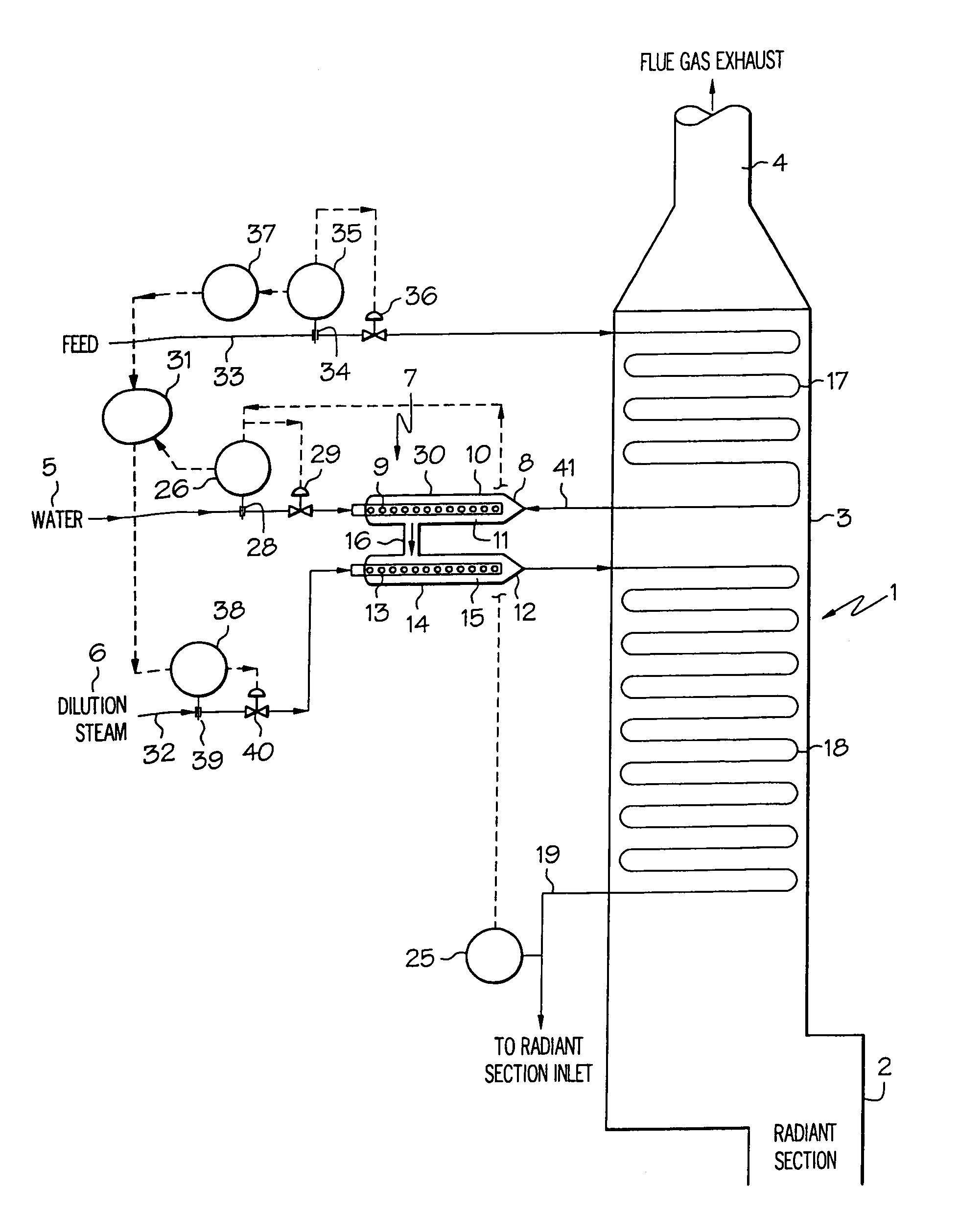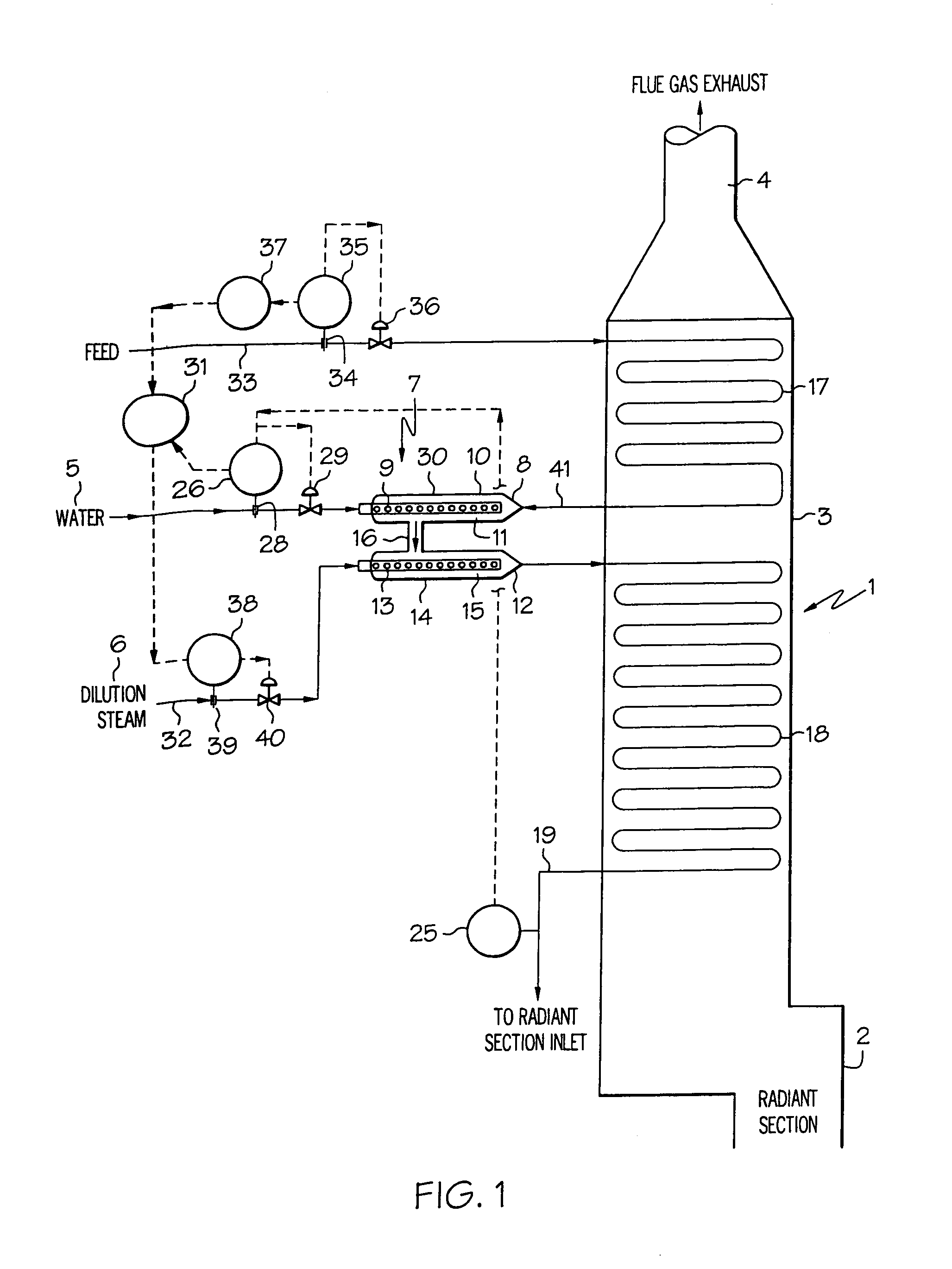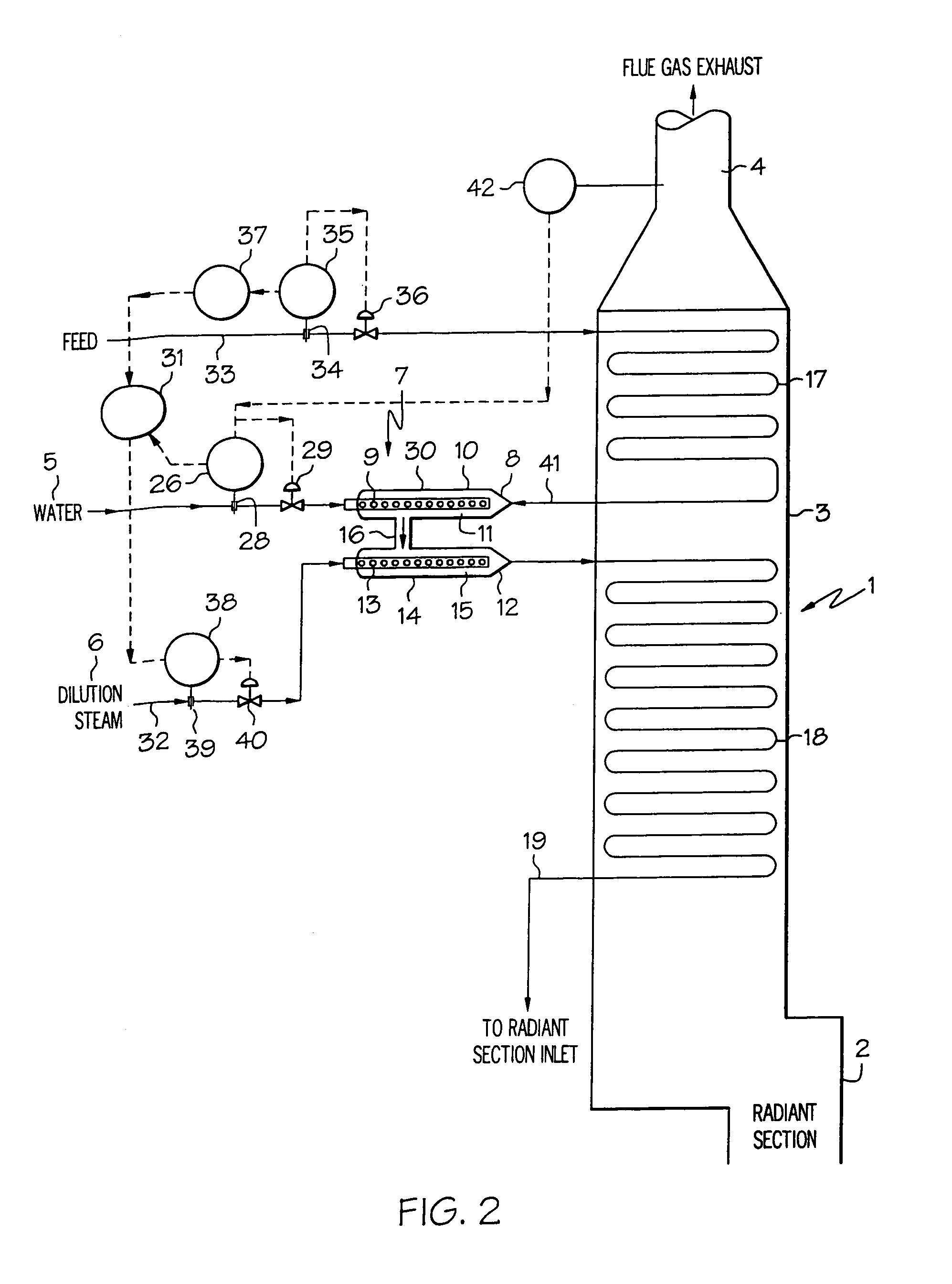Process for cracking hydrocarbon feed with water substitution
a hydrocarbon feed and hydrocarbon oil technology, applied in the cracking process of hydrocarbon oil, thermal non-catalytic cracking, organic chemistry, etc., can solve the problems of inability to absorb heat from boiler feed water preheat and/or high pressure steam superheat services, and inability to meet the needs of high-pressure hydrocarbon feed
- Summary
- Abstract
- Description
- Claims
- Application Information
AI Technical Summary
Benefits of technology
Problems solved by technology
Method used
Image
Examples
Embodiment Construction
[0028]Unless otherwise stated, all percentages, parts, ratios, etc., are by weight. Unless otherwise stated, a reference to a compound or component includes the compound or component by itself, as well as in combination with other compounds or components, such as mixtures of compounds.
[0029]Further, when an amount, concentration, or other value or parameters is given as a list of upper preferable values and lower preferable values, this is to be understood as specifically disclosing all ranges formed from any pair of an upper preferred value and a lower preferred value, regardless whether ranges are separately disclosed.
[0030]The present invention relates to a process for treating hydrocarbon feed in a furnace. According to one embodiment, the process comprises (a) heating hydrocarbon feed, (b) adding water and dilution steam to the heated feed to form a mixture, (c) heating the mixture and (d) feeding the heated mixture from (d) to the furnace, wherein the water in (b) is added in ...
PUM
| Property | Measurement | Unit |
|---|---|---|
| discharge temperature | aaaaa | aaaaa |
| discharge temperature | aaaaa | aaaaa |
| discharge temperature | aaaaa | aaaaa |
Abstract
Description
Claims
Application Information
 Login to View More
Login to View More - R&D
- Intellectual Property
- Life Sciences
- Materials
- Tech Scout
- Unparalleled Data Quality
- Higher Quality Content
- 60% Fewer Hallucinations
Browse by: Latest US Patents, China's latest patents, Technical Efficacy Thesaurus, Application Domain, Technology Topic, Popular Technical Reports.
© 2025 PatSnap. All rights reserved.Legal|Privacy policy|Modern Slavery Act Transparency Statement|Sitemap|About US| Contact US: help@patsnap.com



